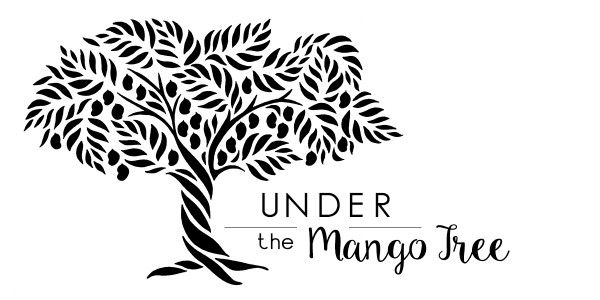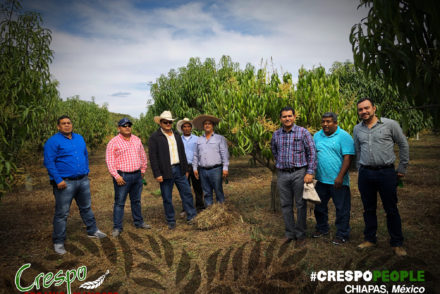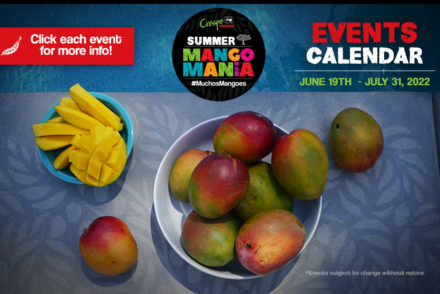A destiny of connecting dots between farmers, culture, food, and joy
Originally this was going to be a quick recipe post, but I ended up spending the better part of the day to contemplate and write. As it goes, this mango cake recipe revealed to me the story of my destiny. As you may have learned by now, most of my recipes are not just recipes. Instead, most contain an anecdote or some personal truth that is revealed to me once I get the opportunity to write the recipe down…
Today I received a text from a longtime friend talking about fate. This text randomly flashed me back to times as a little girl in Nicaragua, memories full of parrots and feelings of mango-joy. Today’s flashback clarified how long mango-joy has been a part of my life – the result of fate and destiny working together as partners. I guess that running joke of me as the mango queen isn’t far from the truth.
They say that you cannot change fate, but destiny is what you are meant to be. I have often heard fate described as the natural order of life taking shape. It’s passive and takes a more sit back approach. While many people believe solely in fate, I am not one of those. I believe in fate and destiny working in tandem. Turns out, I needed to remind myself of this belief, as I had been struggling with some life direction stuff. Contemplation is natural and necessary, especially as the new decade quickly approaches. I was teetering between leaving it to fate (waiting) and shaping my destiny (seeking).
Destiny is important to me personally and professionally. It’s something we can actively shape and alter, and our choices play a key role in this. Destiny requires courage, vulnerability, perseverance, curiosity, will power, compassion, gratitude, assertiveness, honesty, and patience to forge its path. Fate, some say is simply your destiny in the hands of others. To control your own destiny and live your own path of fate, we need to decide when to act and when not to act.
My fate has surely always been to work in food and agriculture, but my destiny is rooted in mango-joy. Mango-joy for me, thanks to my memory flashback for showing me, is essentially the idea that food is a connector to all, and joy is the result of connection.
Despite the fact that I didn’t love the flavor of mangoes as a child, I did recognize their magic as a little girl in Nicaragua. Everyone I knew in Mexico and Central America seemed to love and covet them, and even my two pet parrots in Nicaragua – Rosie and Blackjack (aka BJ) – adored them. That’s when I first came upon mango-joy.
We lived on an old run-down coffee plantation in the jungle-laden mountains outside Managua, and there were about 30 hectares of mango orchards on the property. During mango season, we would let Rosie and BJ loose in a tree of our choosing each morning and retrieve them by day’s end. They would spend the day frolicking high up in the mango trees and by night would re-emerge, oftentimes making their way down from a hundred feet up – dripping in mango juice and joyful. I’m not sure if you have ever seen a bird smile, but I have and it’s awesome.
I see the same joy in people around mangoes, and it dawned on me today that it’s no accident that mango-joy is important to me. My days as a young girl in Nicaragua sealed my destiny, no doubt about that, but until today I had never thought that mango-joy was a part of that destiny.
Mangoes are the most consumed fruit in the world, and they are one of the most increasingly consumed fruits in North America. Americans are finally catching on to what the rest of the world has known for ages – that mangoes are magical and have a power beyond nutrition and flavor. This cake recipe celebrates that magic and honors that mango-joy. This magic complements my work to help make farmers more money but also so others can feel the joyful connection to people, to culture, and to food that I felt as a small girl in Central America. It’s all intertwined.
Despite the fact that I’m not as utterly obsessed with eating mangoes as some people, I am sort of known as the mango lady – a title I wear with great pride. I give lots of mangoes to a little boy named Levi in the town I live. Levi refers to me as the Mango Queen, and he describes me happily climbing mango trees. His vision reminds me of my old pals Rosie and BJ, but it also reminds me that the fated transactional aspect of my work selling mangoes is not enough on its own to fuel my passions, and it’s not enough to sustain longevity for farmers.
I know there is power behind connection-making. From seed to mouth was the motto of my first company, Ger-Nis International. I started this company back in 2005. Its mission was to help farmers earn more money and to provide consumers with more food education. I never achieved that goal fully at Ger-Nis Intl. – at least not in the way I intended. It wasn’t until I started working with the Crespo family that I really understood how to fulfill my seed to mouth destiny, connecting the dots between farmers and eaters.
Working at this intersection is rare, especially in the produce industry. By highlighting the two most important people in the chain – the farmer and the eater – I’ve found that the “best results” are achieved. On the farmer side, I define best results as: longevity of farmer sales with a continuous desire to improve the process, and the quality of their own communities. On the consumer side, best results mean that food is reasonably priced, flavor-filled, nutritious, and ethically grown and that it is surrounded by commodity and culinary education. Farmer « Food « Culture « People together all leads to greater joy when connected; this is the kind of joy I see when I give mangoes away or serve mango cakes at birthday parties. This is the kind of joy that awes shoppers when they see gigantic displays of mangoes at their grocery store or bite into a perfectly ripe Ataulfo mango.
As I contemplate the closing of another decade, I recall the path that brought me here, Under The Mango Tree (literally and metaphorically). This path has been anything but conventional. As I work and live in this convergence between food and agriculture, I feel destined to be exactly where I am. When I think back to Rosie and Blackjack, a wave of nostalgia comes over me. Along with it comes a revitalized belief in the power of fate and destiny working together, but, more importantly, a renewed belief that the onus is on us.
Special thanks to all of the mango queens that brought this cake to life. These are the women who are an essential part of my own destiny and my own joy! Thanks also to Levi, the little boy that reminds me of what matters.
Mango Satsuma Ricotta Cake with White Chocolate Buttercream Frosting
Makes 1 8-inch 3-layer cake
This cake started out as a simple birthday cake for a friend. When I asked my friend what kind of cake she wanted, she told me about her childhood eating angel food cake and white chocolate frosting. She also said she likes anything with mangoes. I know she said this because she, like many, associates me with mangoes. People love mangoes, and they often want me to make mango-centric food. I wanted to grant all of these wishes (because that’s how I roll), and this is that mango cake. It conjures up mango-joy and affirms the fruit’s culinary versatility.
The cake is seasonal, fresh, and not overly sweet. Like most of my recipes, it is forgiving of imperfections, as I think life should be. Mangoes are the focal point, but the cake is anything but tropical. Seasonal satsumas merge with the mangoes to create a bright new winter mango jam snug in-between the ricotta cake layers and smothered atop the white chocolate buttercream frosting.
The cake is a gift to us all, as are my mango queens! This cake was destined to exist. It’s what happens when a bunch of queens, mango or otherwise, get together to celebrate friendships.
Ingredients
For the mango-satsuma jam
4 large mangoes, about a pound each or roughly 4 cups of chopped mango flesh
¾ cup satsuma juice
2 tablespoons lemon juice
1 teaspoon lemon zest
2 teaspoons satsuma zest
½ teaspoon kosher salt
½ cup sugar
1 cup sugar1 teaspoon salted butter (optional)
For the cake
1 1/3 cup olive oil
1 1/3 cup whole milk ricotta
4 eggs
2 cups sugar
1 ½ cup buttermilk
1 tablespoon vanilla extract
¼ cup mango-satsuma jam
4 ¾ cups all-purpose flour
1 ¼ teaspoon salt
1 ½ teaspoon baking soda
1 ½ teaspoon baking powder
1-2 tablespoon fresh lavender petals (optional)
For the frosting
3 ½ (1 ¾ cups) sticks butter, salted, room temperature
2 cups powdered sugar
2 tablespoons mango-satsuma jam
10 ounces white chocolate, melted and room temperature
Directions
For the mango jam
Place a plate in the freezer. (This is for testing if the jam is done later.)
Combine the mango flesh, satsuma and lemon juice, zests, salt and sugar in large heavy bottom saucepan and mix to combine. Place the pot on the stove on medium high heat. Stir well, and mix in all the sugar so it begins to dissolve with the heat. Once most of the sugar has dissolved into the mango mixture, turn the heat up to high. Cook on high heat for a total of 30 minutes, paying attention and stirring often. Stir well but with some gentleness so as not to totally break apart all the mango pieces. Make sure to scrape the bottom of the pan often, to keep it from burning or sticking.
Turn the heat down to medium low and continue to cook and stir another 20-30 minutes, or until the jam is to your desired thickness. The jam should be thick, jammy, and not easily slide off a spoon. Once you believe the jam is almost done (and before testing with the plate), add the butter and stir well, cooking another 1-2 minutes.
Take your plate out of the freezer to test your jam. To do this, place a small spoonful on your cold plate and poke your finger in the jam. The jam should stay firm as opposed to running into the crevice you just made with your finger. If the jam is still runny or loose, allow it to cook again (on high heat) another 3-4 minutes and test again. Make sure you put the plate back in the freezer in between.
Cover and place in the refrigerator for up to 4 weeks.
For the cake
Preheat oven to 350°F. Grease 3 8-inch round cake pans.
In the stand mixer, beat together the oil, ricotta, eggs, sugar, buttermilk, vanilla, and mango-satsuma jam in the bowl until smooth and creamy. In a separate bowl, mix together the flour, salt, baking soda, baking powder, and fresh lavender if you are using. In the stand mixer, add the flour mixture to the ricotta mixture about ¾ cup at a time, until creamy and mixed.
Divide the batter evenly between the 3 cake rounds and place in the oven to bake for about 25-30 minutes, until the cake is a golden color and firm. A knife inserted into the middle should come out clean. Remove the cake pans and let cool about 5-7 minutes and then remove, running a knife around the outside to loosen the edges. Gently place the cakes on a cooling rack or wooden cutting board until they are totally cool.
For the frosting
Add the butter, mango jam, and powdered sugar to a large bowl, and beat with an electric hand mixer until the buttercream is well mixed, light, and fluffy. Add the melted white chocolate and beat until combined.
For the cake assembly
Using a serrated knife, even out the tops of the cakes so they are totally flat. Place one layer (cut side down) on a plate. Spread about ¼ of the buttercream over the top of the first layer evenly, and then spread about ¼ cup of the mango-satsuma jam evenly over the frosting layer. Do the same thing with the next cake layer. For the third and top layer, place the cake layer cut side down on the second layer; though, instead of the mango-satsuma jam, add a thick layer of frosting. Frost the outside of the cake; on the top, make a little well in the center – either by piping frosting or by using a knife – and add the mango-satsuma jam to the top.
The cake doesn’t have to be chilled if you are going to eat it the same day.















No Comments